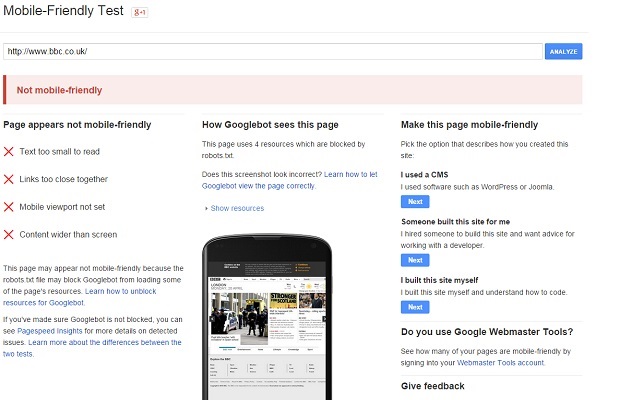When Google released its Mobile-friendly update on April 21st 2015, many experts believed it would have a dramatic impact. Websites that we’re not deemed ‘mobile-friendly’ were penalised in the search results rankings on mobiles. But nearly two months on, how have the changes affected sites that are not optimised for smartphones and tablets? New research has some surprising results…
When Google first made the announcement, many web pages that fail to provide a good user experience when viewed on mobile phones were predicted to drop down in search results (which is why the update was dubbed ‘Mobilegeddon’).
However, many search experts have since indicated the update may not have been as hard hitting as initially expected.
To assess the real impact, Searchmetrics has conducted a ‘before and after’ study by analysing the change in search rankings for a set of hundreds of thousands of web pages against a database of tens of thousands of keywords on Google.com.
The study analysed the search results appearing on the first three search engine results pages (SERPS).
The analysis highlights two key trends.
Firstly, the share of web pages Google considers mobile-friendly appearing in the first three SERPs increased by 3% after the update, accounting for 71% of the total. While those pages deemed not to be mobile-friendly dropped by a corresponding amount to 29% the total after the update.
Secondly, the average change in ranking position of pages deemed not to be mobile-friendly fell – dropping 0.21 positions on average (against the tens of thousands of keywords tested) after the update. At the same time, pages deemed mobile-friendly appeared higher in search results by 0.2 positions (see chart).
“While these don’t look like high numbers, we do consider this a significant change given the large volume of keywords analysed,” said Marcus Tober, CTO and founder of Searchmetrics. “This is especially true as we only included those web pages that have stayed in the top three search results pages after the Google mobile-friendly update. If you add in the non mobile-friendly pages that have completely dropped out of the top three pages, the average loss in rankings would have been much higher.”
In Searchmetrics’ analysis web pages were considered mobile-friendly if they Google has labelled them “mobile-friendly” in SERPs.
You can check mobile-friendliness also by conducting a URL-based test using Google’s own tool to help webmasters assess their pages.
In coming weeks, Searchmetrics expects to release further data on the factors that affect the rankings of web pages in mobile phone searches.
